The 1977 Blackout
On July 13, 1977 at 9:34 pm, the lights went out in New York. This wasn’t the first blackout in New York City-the “Where were you when the lights went out?” blackout of 1965 was a fairly recent memory-and it wouldn’t be the last, but it did leave an indelible mark.
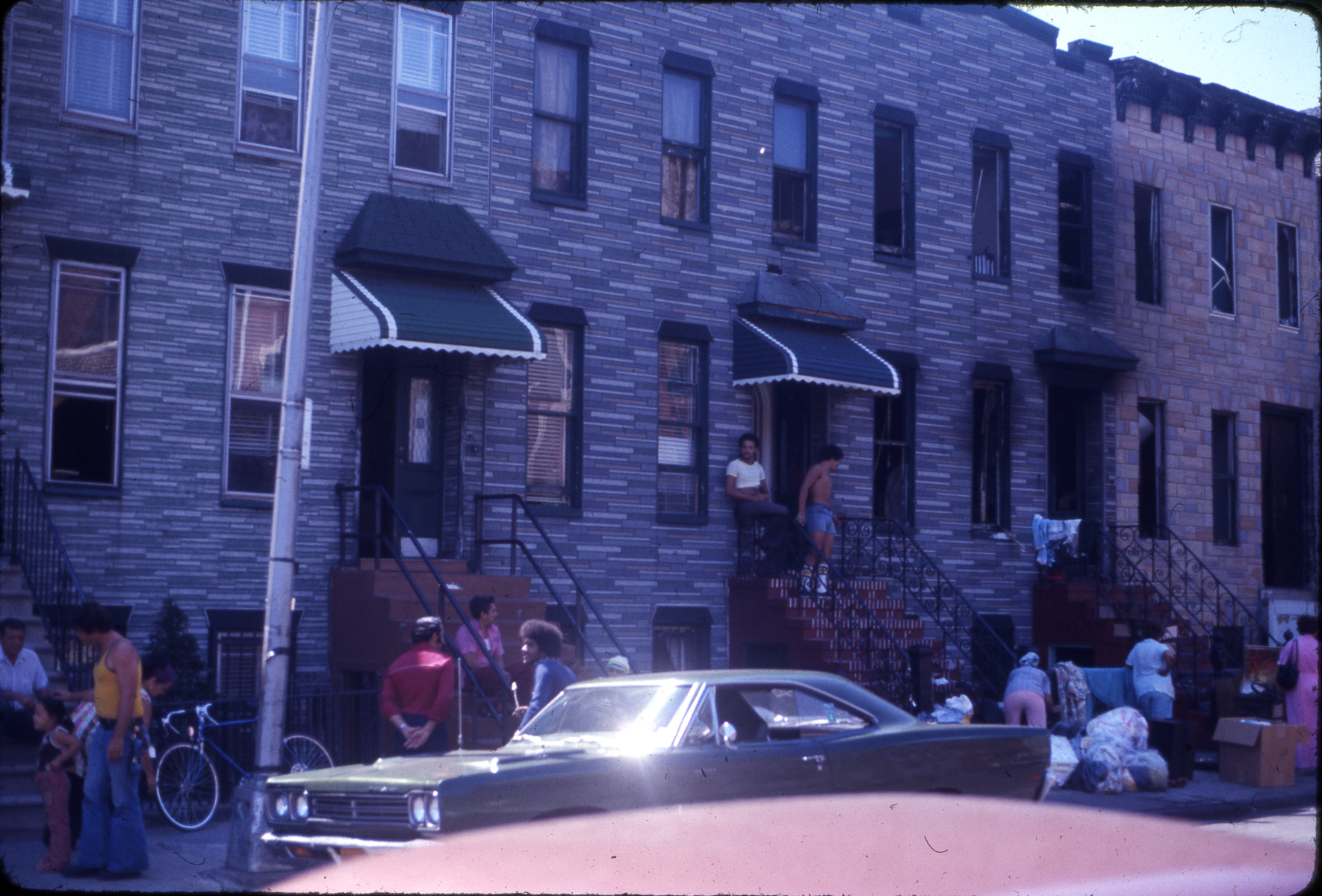
On the Front Steps in Bushwick, 1977, v2007.042.24; 1977 Blackout Slide Collection, Brooklyn Historical Society.
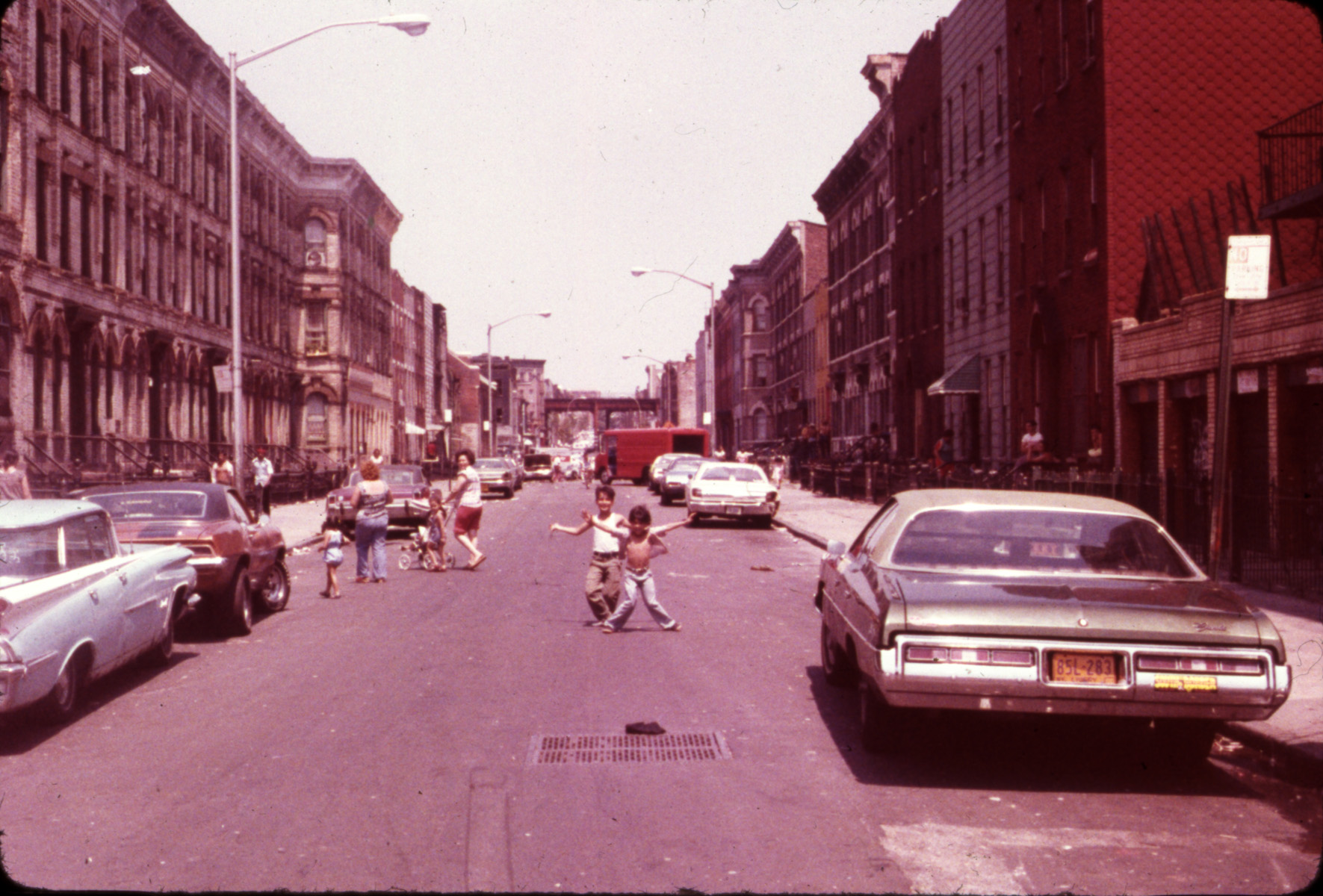
Children Playing in the Street in Bushwick, 1977, v2007.042.112; 1977 Blackout Slide Collection; Brooklyn Historical Society.
Caused by a series of lightning strikes to various components of the city’s electrical generation, transmission, and distribution system, the blackout left parts of New York without electricity for up to 24 hours. Per an article by Victor K. McElheny from the July 16, 1977 edition of The New York Times, “one factor in the slowness of restoring service was the need to reset manually the circuit breakers that had tripped during the collapse of the system.” In contrast, the outage of 1963 lasted just about 15 hours while that of 2003 went on for more than 24 hours in some parts of the city.
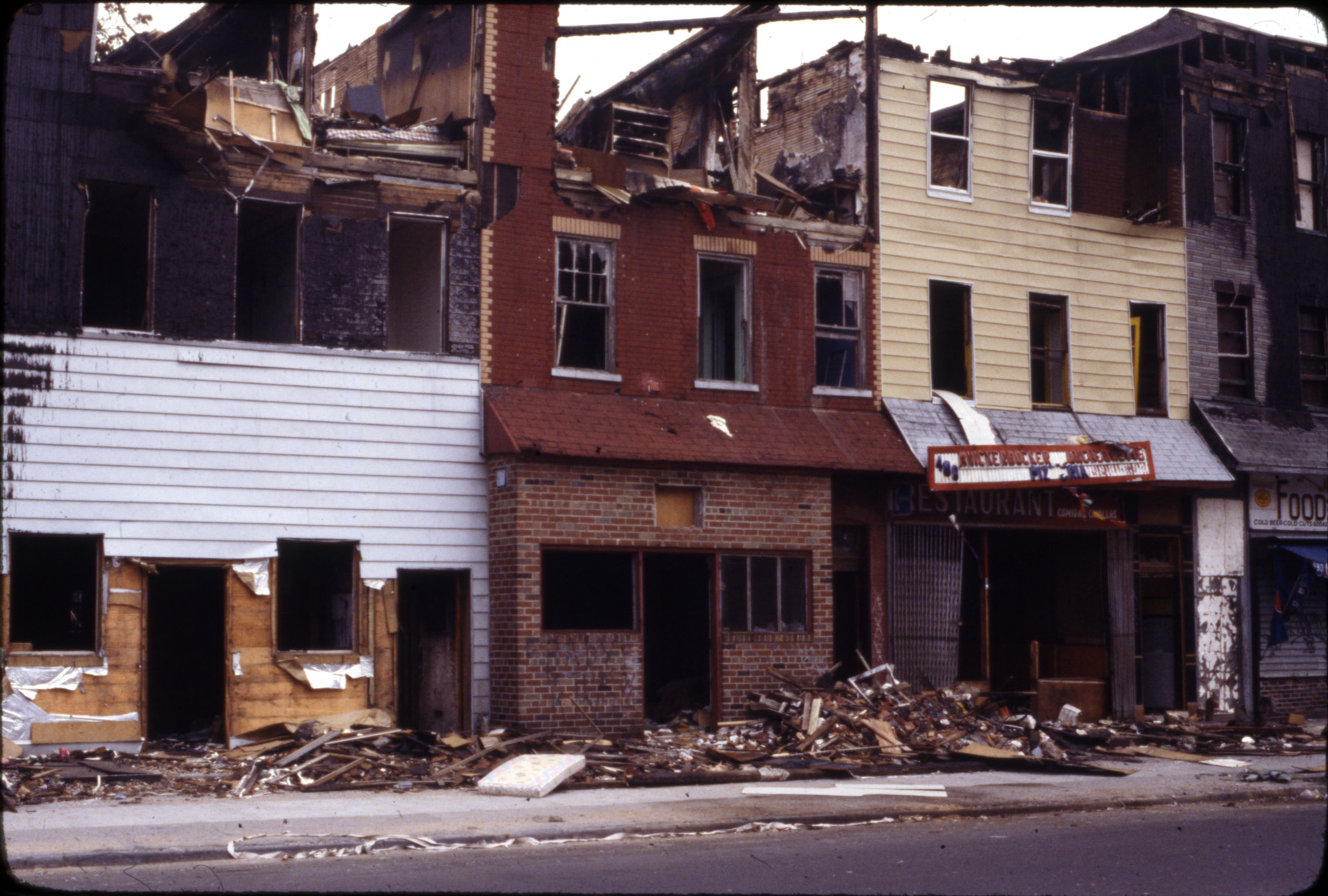
Local Businesses Destroyed in Bushwick, 1977, v2007.042.72; 1977 Blackout Slide Collection; Brooklyn Historical Society.
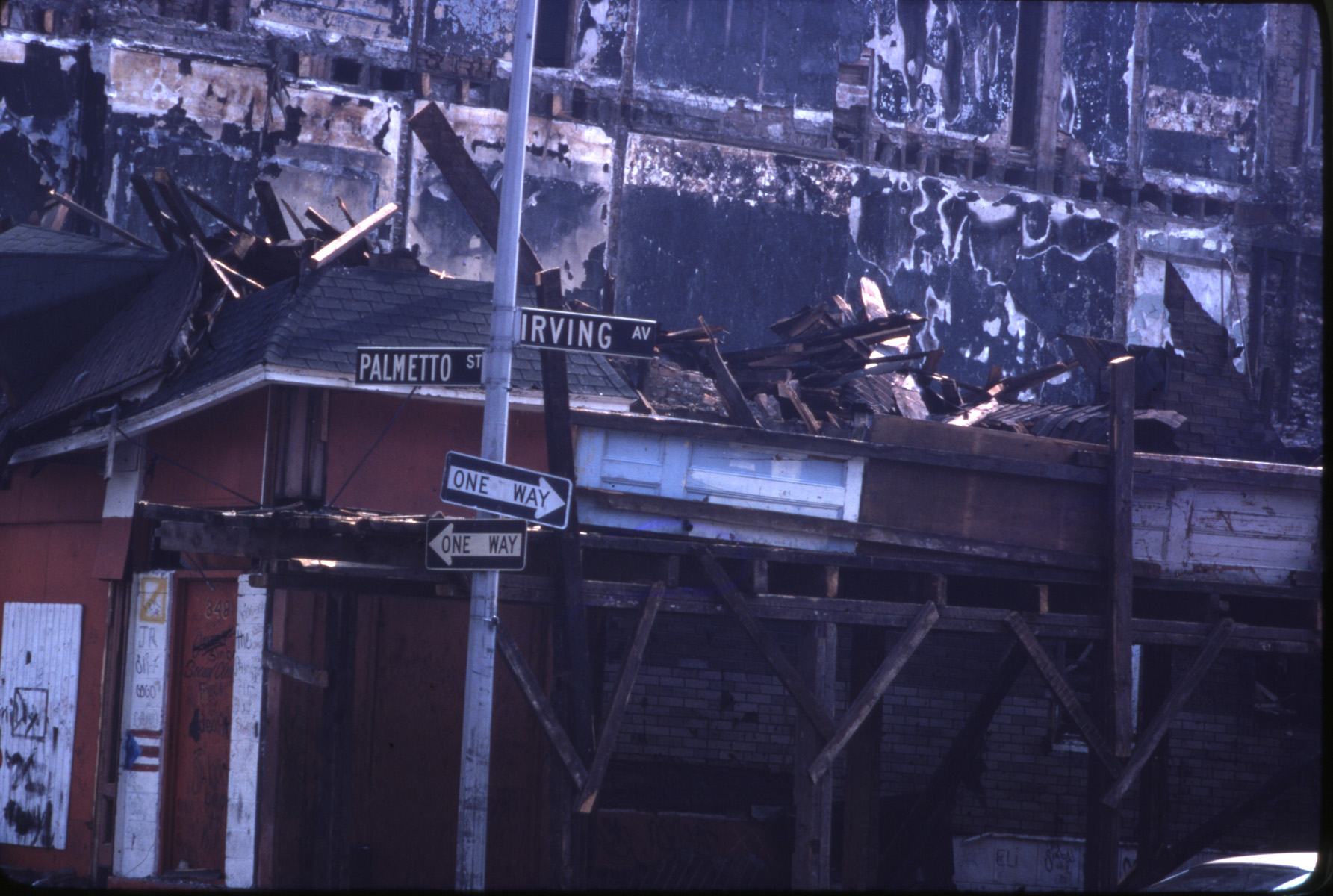
Destroyed Buildings at the Intersection of Irving and Palmetto in Bushwick, 1977, v2007.042.92; 1977 Blackout Slide Collection; Brooklyn Historical Society.
Still, even disregarding their lengths, the blackout of 1965 and later, that of 2003, were different than the outage of 1977 - both occurred during times of relative economic ease and are remembered almost fondly by those New Yorkers who lived through them. In contrast, July 1977 found New York in the midst of the Summer of Sam and a crippling economic downturn. As Francis X. Cline wrote in the July 15, 1977 edition of The New York Times, “It [the Blackout in 1977] was not a matter of genial sing-alongs in East Side bars, although there was that. Or outer borough imitations of British perseverance and Hoosier hospitality, although there was that. Or Everyman become Boy Scout, although there was that, too.” Instead, what characterized the power outage of 1977 was the looting and destruction that began in its wake. The looting and burning resulted in the arrest of over 3,700 individuals, as well as massive property damages and staggering losses by local business owners (Wicker, T. July 17, 1977. “A Prophesy Fulfilled”, The New York Times).
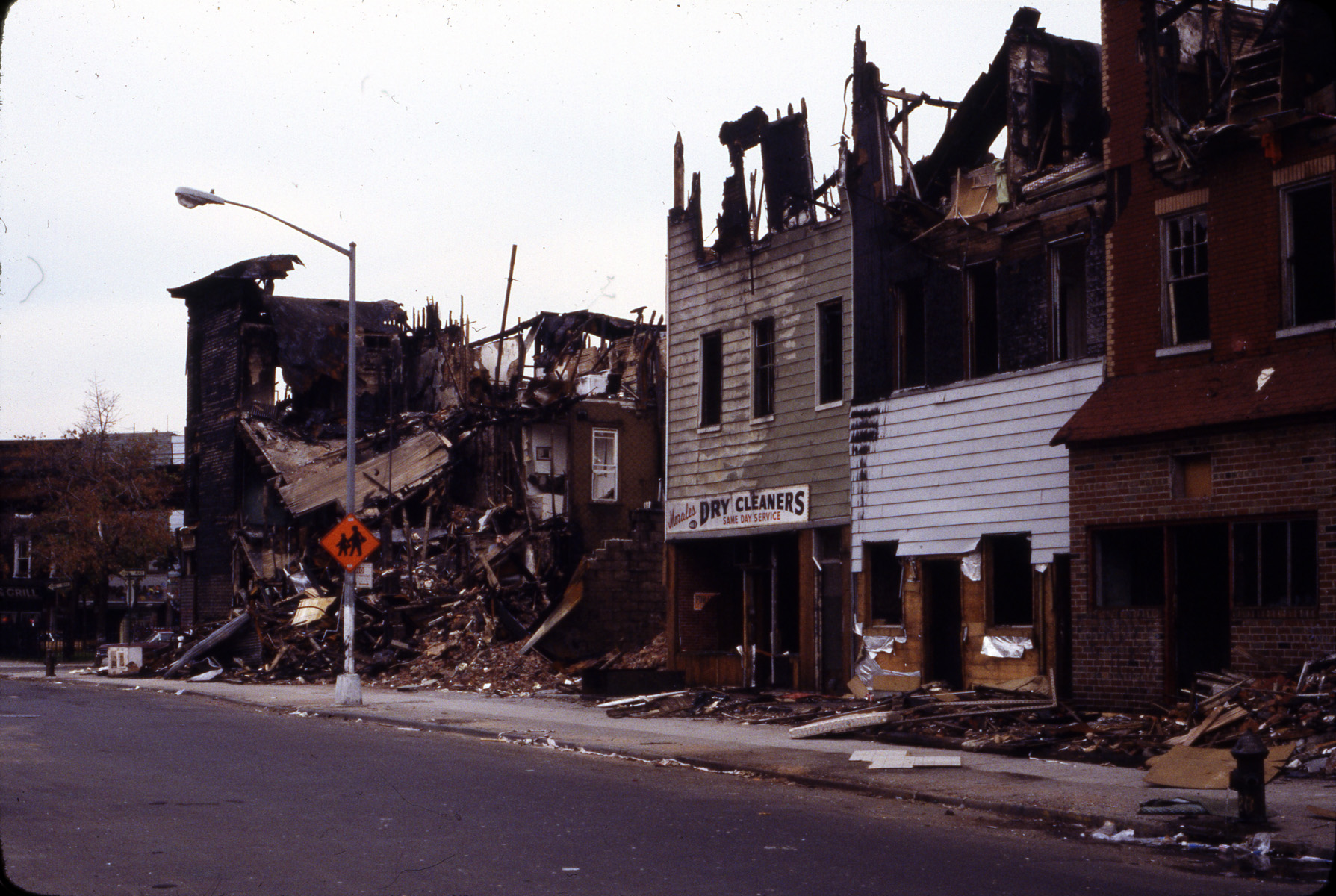
Destruction in Bushwick in the wake of the blackout, 1977, v2007.042.38; 1977 Blackout Slide Collection; Brooklyn Historical Society.
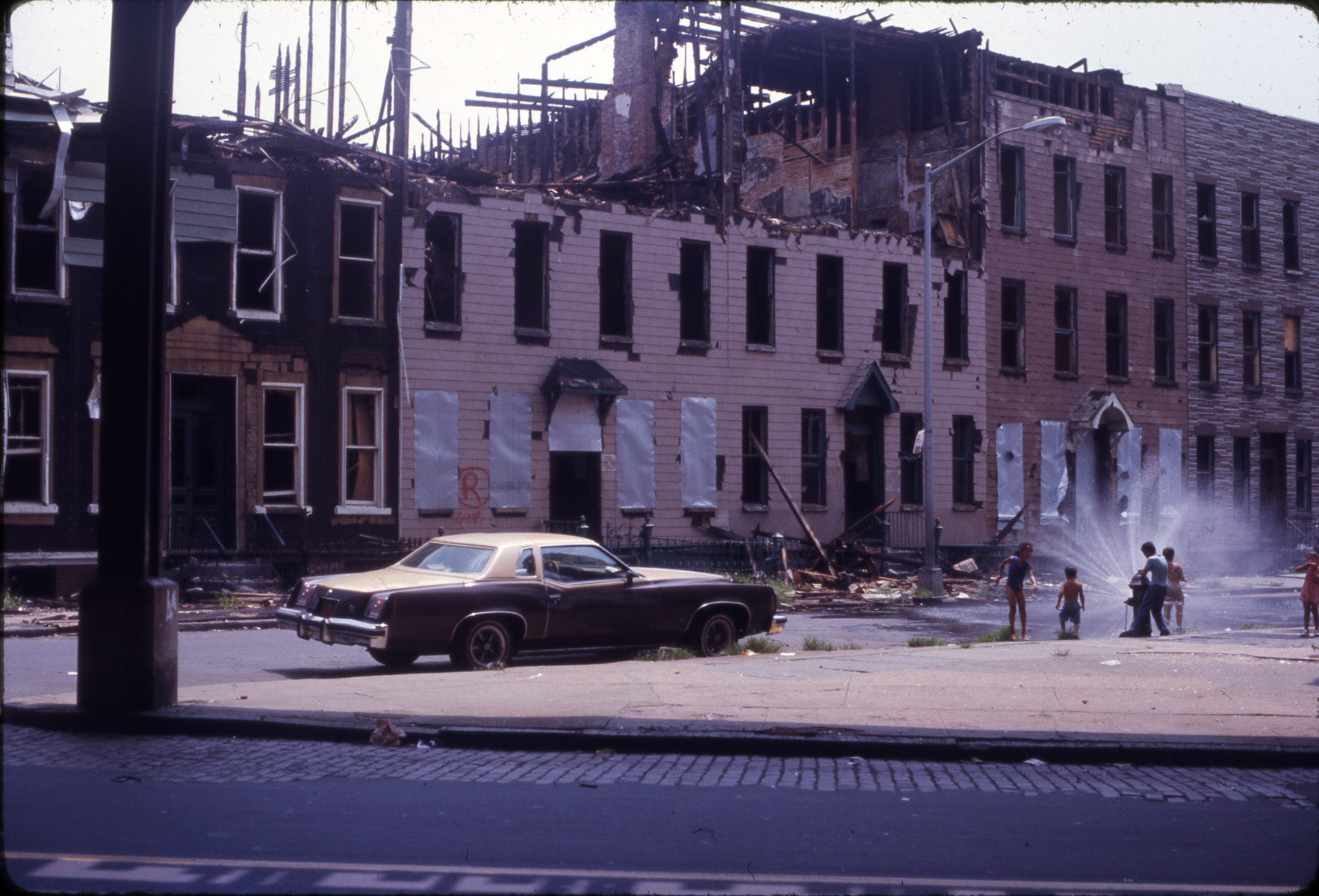
Children Playing in a Fire Hydrant in Bushwick, 1977, v2007.042.32; 1977 Blackout Slide Collection; Brooklyn Historical Society.
In 2007, a collection of photographs depicting Bushwick in the wake of the blackout were donated to the photography archive at BHS. Bushwick, along with Crown Heights, was among the neighborhoods hit hardest by the melee brought on by the blackout. While the majority of the slides catalog destruction and ruin, some highlight brighter and cheerier notes; neighbors talking with one another, children splashing in water from a fire hydrant. The images above are some samples from the collection, which we think showcase the struggles that Bushwick residents faced after the 1977 Blackout, as well as the vibrancy and diversity of the neighborhood. We were unable to verify the photographer(s).
By Katie Hut - Brooklyn Historical Society intern
This post was also published in the Brooklyn Historical Society's Blog here.

![[View of east side of Rugby Road.]](../sites/default/files/imagecache/70x60/externals/be72e318a02a854eda287bdf9223970b.jpg)

![[Anniversay Day Parade, folder III]](../sites/default/files/imagecache/70x60/externals/a22fc93f6e19345523f1432a55ba6d4a.jpg)
![[East side of Buffalo Avenue.]](../sites/default/files/imagecache/70x60/externals/495d84960476a39f51bb04bcbb33e86c.jpg)
![[Northwest corner of 86th Street and 10th Avenue. ]](../sites/default/files/imagecache/70x60/externals/839c55ff4e4fa1d687c8eed5a26d3d70.jpg)

![[West side of Seventh Avenue.]](../sites/default/files/imagecache/70x60/externals/20869d81d9cc58ad8abea3ca5985ba04.jpg)
![[Close-ups of Erv Palica's pitching grips]](../sites/default/files/imagecache/70x60/externals/ac10a64269cd38de4309dfaf8d25af3e.jpg)
![[Corner of Adelphi Street (left) and Fulton Street (right). ]](../sites/default/files/imagecache/70x60/externals/eca83f9a4a6e2b08584ede023a582808.jpg)




